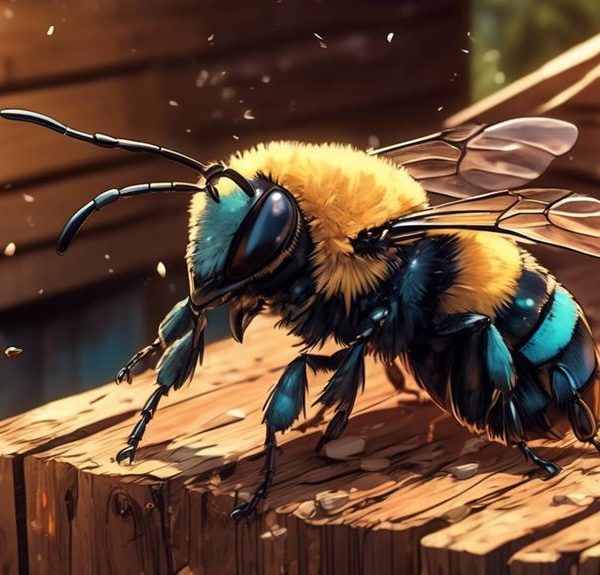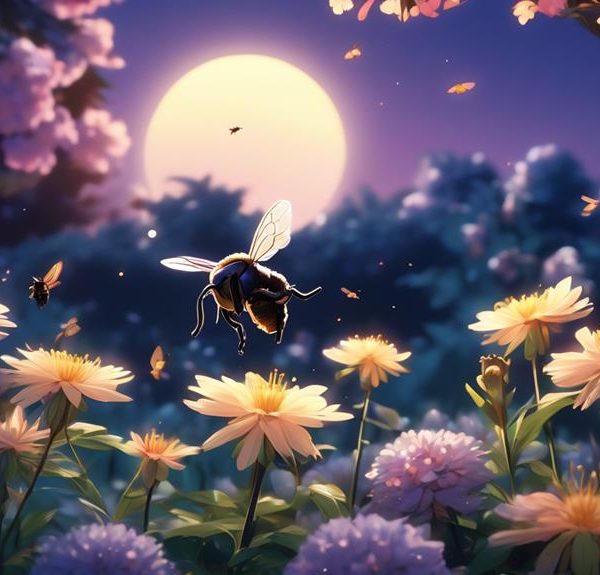Uncover the mystery of what carpenter bees produce, a fascinating journey that reveals their unique contributions to our ecosystem.
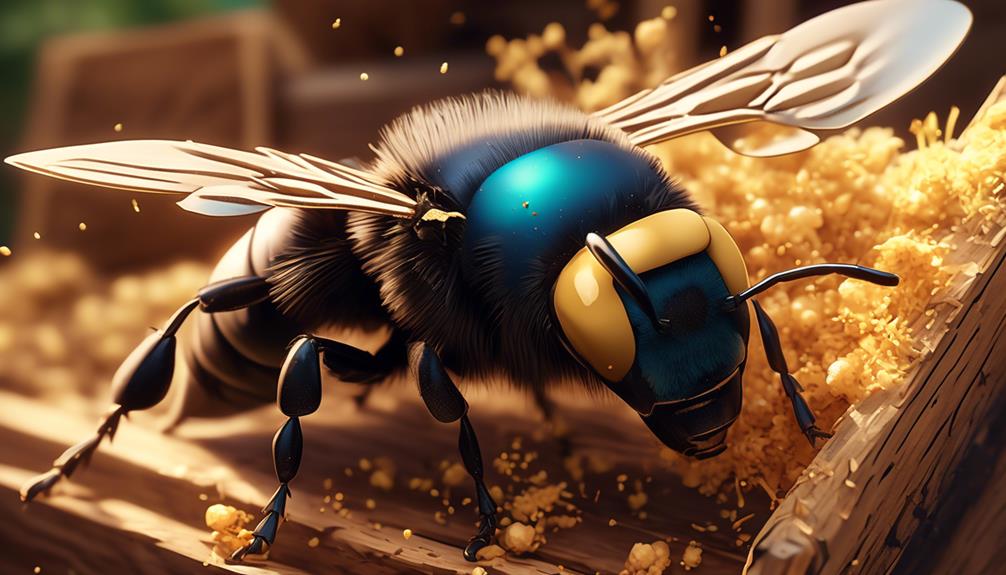
What Do Carpenter Bees Produce
Bees are often seen as nature's little workers, tirelessly buzzing from flower to flower. But what about carpenter bees? You're probably familiar with their name, but do you know what they actually produce? Unlike their honey bee cousins, carpenter bees don't produce honey.
Yet, they're not just buzzing around for no reason. These fascinating creatures do contribute to our ecosystem in their unique way. But how? Well, hold onto your hat because we're about to embark on an enlightening journey of discovery.
Key Takeaways
- Carpenter bees produce nests by boring holes in wood, creating tunnels and chambers for their eggs.
- They play a significant role in pollination, with their bodies covered in pollen while foraging for nectar.
- Carpenter bees contribute to cross-pollination when pollen rubs off onto the female part of a flower.
- While they can cause structural damage by boring holes in wood, it's important to consider their ecological role as important pollinators for many plant species.
Understanding Carpenter Bees
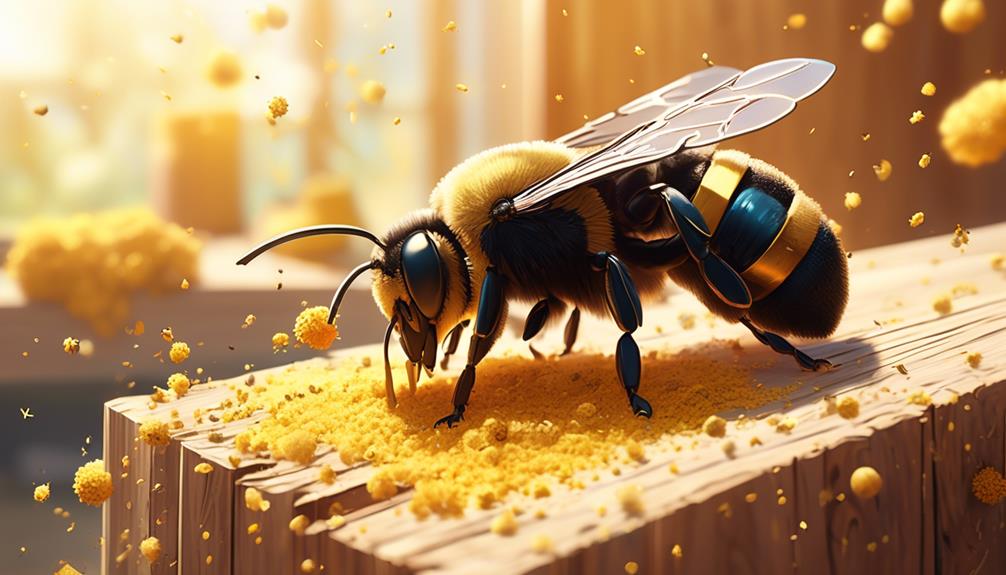
To truly appreciate the value of carpenter bees and their products, you need to understand their unique biology, behavior, and general characteristics.
Unlike honeybees, they're solitary creatures. Each female independently builds nests, usually in timber, creating tunnels and chambers where she lays her eggs. Her life's work is precision personified, a testament to nature's engineering.
Now, let's delve into their biology. Carpenter bees are robust, large bees, often mistaken for bumblebees. However, they can be distinguished by their shiny, hairless abdomen. They're equipped with strong jaws, used for excavating wood, hence their name. Their lifespan isn't long, only about one year, but during this time, they play a crucial role in pollination.
Their behavior is equally interesting. While females are busy tunnelling, males patrol the area, warding off potential intruders. Yet, despite their threatening demeanor, male carpenter bees can't sting. It's the females you need to be wary of. But don't worry, they're not aggressive and will only sting if provoked.
Understanding these attributes helps you appreciate not only the bees themselves but also the products derived from them. So, next time you see a carpenter bee, acknowledge its contribution to our ecosystem.
Life Cycle of Carpenter Bees
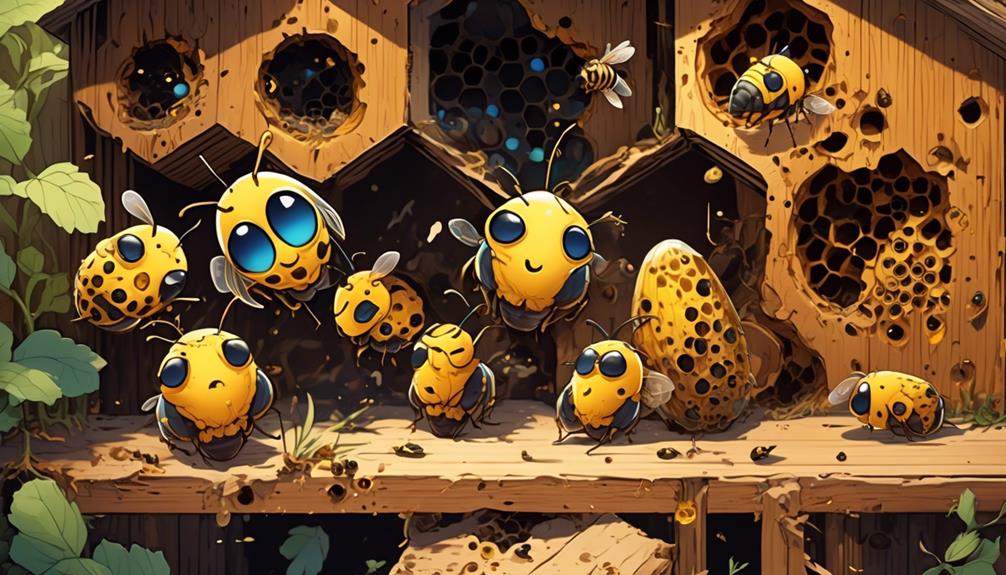
Having grasped the distinctive biology and behavior of carpenter bees, let's now chart the course of their fascinating life cycle. The life cycle of these industrious insects begins when the female lays her eggs in a nest she's meticulously excavated within wood. She partitions the tunnel into separate cells, each housing a single egg and a food store of pollen and nectar.
Hatching from the egg, the larva consumes the food store, then pupates, transforming into an adult bee over several weeks. This metamorphosis phase is crucial, as the larva reorganizes its body structure to obtain its adult form. Emerging from its cell, the adult bee will remain in the nest until it's fully matured and ready to venture out.
The life cycle doesn't end here. Adult carpenter bees hibernate in their nests during winter, emerging in spring to mate and continue the cycle. The females, after mating, return to their birth nests or create new ones, laying eggs to begin the next generation. The males, on the other hand, die shortly after mating.
This cyclical nature of life ensures the carpenter bee population's continuity and survival.
Carpenter Bees and Pollination
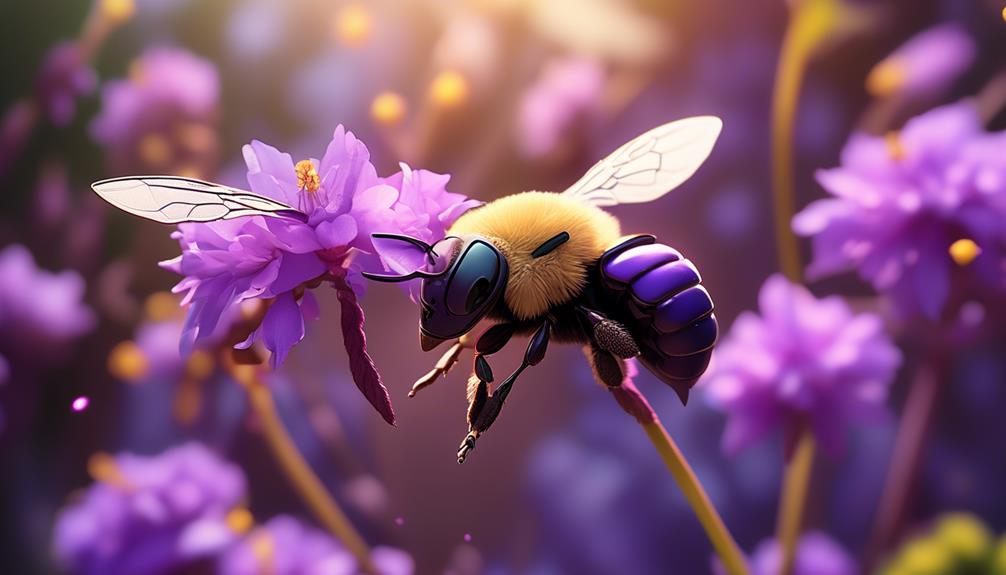
Buzzing from flower to flower, carpenter bees play a significant role in the process of pollination, which is pivotal for the reproduction of many plant species. As you watch them navigate the flora, you'll notice their bodies covered in pollen. This isn't accidental. It's a crucial part of their ecological function.
While they're foraging for nectar, pollen from the male part of a flower, the stamen, sticks to their furry bodies. When they visit the next flower, some of this pollen rubs off onto the female part, the pistil, effectively fertilizing it and leading to the production of fruit or seeds. This act, known as cross-pollination, is essential for plant diversity and survival.
However, carpenter bees also engage in a behavior called 'nectar robbing.' They'll create a hole in the side of the flower to access the nectar without coming into contact with the pollen. Despite this, they still contribute significantly to pollination. They're not as efficient as some bee species, but their sheer size and the volume of flowers they can visit make up for it.
Nesting Habits of Carpenter Bees
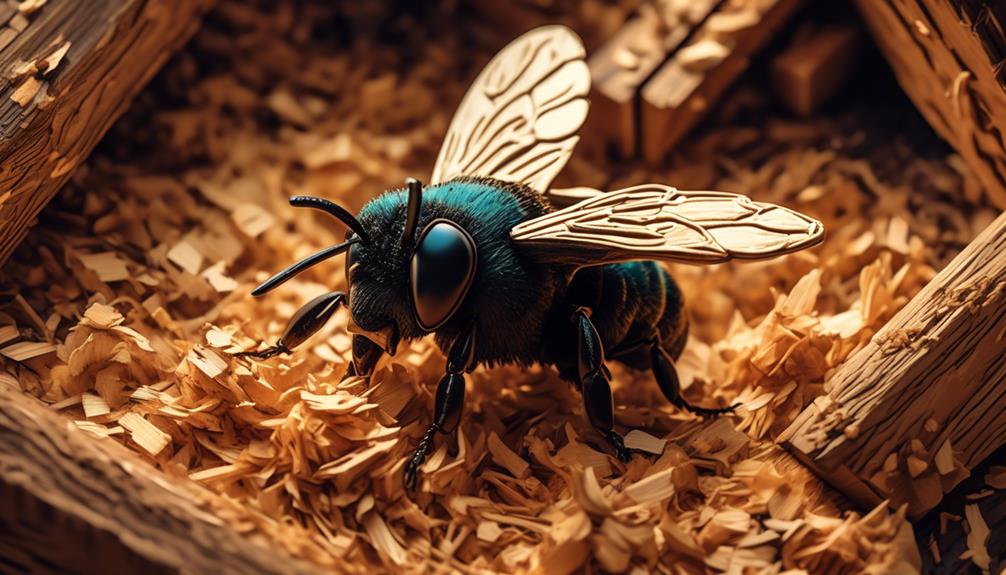
While the role of carpenter bees in pollination is significant, they're equally remarkable when it comes to their unique nesting habits. Unlike most bees, carpenter bees are solitary creatures. They don't live in hives or colonies but bore holes into wood to construct their nests. You'll find these nests in dead trees, wooden structures, or even your house's siding.
Each nest, often mistaken for a mere hole, is a complex system of tunnels and cells. The female bee meticulously carves this intricate labyrinth where she lays her eggs, each in a separate cell provisioned with a ball of pollen for the emerging larva to feed on.
Let's dive deeper into these nesting habits with this table:
Nesting Habit | Description | Significance |
|---|---|---|
Solitary Living | No colonies or hives | Unusual among bees |
Nest Construction | Boring holes into wood | Damage to wooden structures |
Egg Laying | One egg per cell with pollen ball | Ensures survival of the offspring |
These habits may seem destructive, but they're vital for the survival of carpenter bees. So, before you swat off these buzzing creatures, remember that they're playing their part in maintaining the delicate balance of our ecosystem.
Carpenter Bees: Threats and Benefits
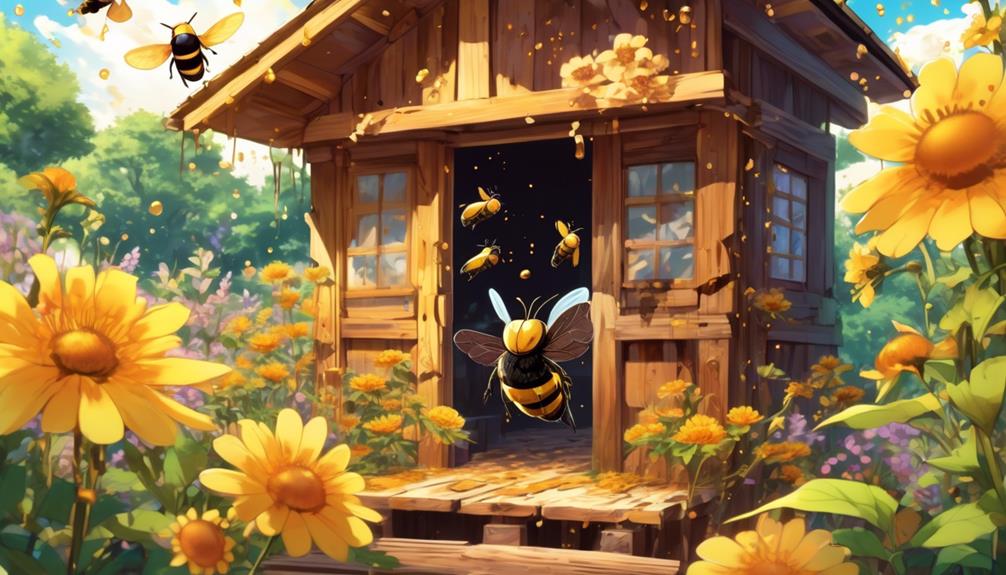
Often, you might view carpenter bees as a nuisance due to their nesting habits, but it's essential to consider the important ecological roles they play before making any hasty judgments. Yes, they can cause structural damage by boring holes in wood, but they also facilitate plant reproduction through their pollinating activities.
From a biological point of view, the threat carpenter bees pose to human structures is a byproduct of their reproductive strategy. They're not intentionally destructive. They bore into wood to create tunnels for laying eggs and raising their young. It's an instinctual behavior, but when it involves your home or other wooden structures, it's understandably concerning.
On the other hand, the benefits carpenter bees bring are significant. They're vital pollinators for many plant species, especially open-faced flowers. Unlike honeybees that carry pollen in baskets on their legs, carpenter bees have dense hairs on their abdomen that collect pollen, making them very effective at transferring it between plants.
Conclusion
So, you've now gained insight into carpenter bees. From their life cycle to their role in pollination, it's clear they're more than just wood-boring pests.
They create unique nests and contribute significantly to our ecosystem. Despite their potential to damage wood, their benefits as pollinators can't be overlooked.
Understanding these creatures is key to developing effective, environmentally conscious methods of cohabiting with them.

